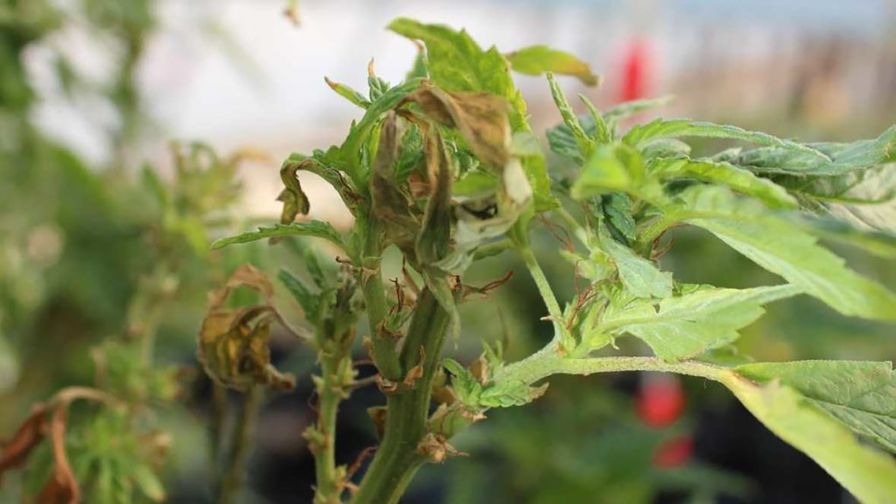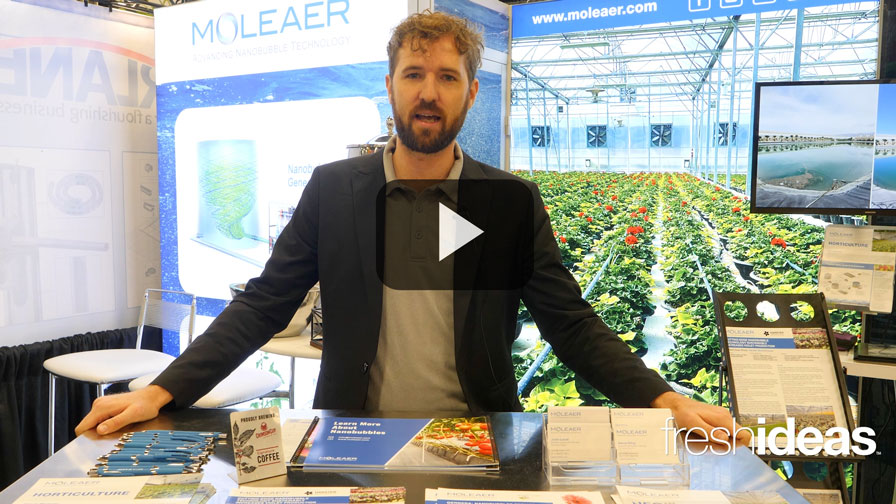The Principles of Creating a Cannabis IPM Program

Some common pathogens, including Botrytis cinerea, are endemic, and will present whenever conditions allow. Photo: Nicole Gauthier, University of Kentucky
The successful production of commercial cannabis requires a responsive IPM (Integrated Pest Management) program. IPM programs are intended to manage pest pressures below the threshold of economic damage.
Cannabis cultivation involves pest control challenges that differ from other crops. Cannabis is relatively robust, but highly susceptible to fungal pathogens, particularly during the late flowering stage. Like all monoculture crops grown in controlled-environment conditions, herbivore populations can proliferate if unchecked, causing significant crop damage.
Regulators have justly banned the use of many of the pesticides commonly used by legacy cannabis growers. Smokable flowers cannot be rinsed before use, and some chemical compounds become more hazardous to humans when combusted. These factors render many chemical controls used in other crops inappropriate for use on cannabis.
Successful cannabis IPM programs will vary by producer and region, but they share four core principles.
Principle 1: Prevention
Successful IPM programs will vary by producer and region, but they share core principles. The first principle of cannabis IPM is prevention. This entails biosecurity and containment measures to limit the introduction and spread of pathogens and pests within production areas. Common measures to limit the human vectoring of plant pathogens include sanitation, footbaths, airlocks, air filtration, and positive pressurization of production areas. The efficacy of these measures is relative to the physical relationship between the cultivation area and the natural environment.
Most cannabis pathogens are either present in the environment or vectored in on live plants. Pathogens like Podosphaera macularis, implicated in powdery mildew infections in cannabis, are host specific, and are not present in all environments. Other common pathogens, including Botrytis cinerea, are endemic, and will present whenever conditions allow. An early line of defense is to limit the import of pathogens when sourcing germplasms. Biological starting materials should be imported in vitro, or as achenes (seeds). Ideally, inbound plantlets should be the product of meristematic tissue culture to minimize the chances of viroid transfer.
Principle 2: Continuity
A second important principle of successful cannabis IPM programs is continuity of care, from plant creation to postharvest. Cuttings should always be taken from vigorous, healthy stock. The cloning process usually involves humidity, temperature, and stagnant air conditions, which favor fungal pathogen establishment. Unless cloning directly into a suppressive soil, bioprotectants should be considered as a drench for rooting media. Several organisms, including Bacillus subtilis, Streptomyces lydicus, and Trichoderma harzianum, have shown efficacy in suppression of fungal pathogens, and are available in branded formulations.
Principle 3: Observation
Observation is a third central component of pest management programs. All production crops should be thoroughly scouted at least once per week by skilled personnel. Pest maps are used to detail the identity and intensity of all pest pressures so that biological releases and other treatments can be effectively targeted. Pest maps are posted in production areas, and all crop operations proceed from areas of lowest to highest pest pressure to limit human vectoring.
Once small plants have been established, beneficial nematodes can be watered in, and Hypoaspis mites (S. scimitus) broadcast on the soil surface. These biocontrol agents have demonstrated efficacy in managing fungus gnats, thrips, and other pests, at their larval stages. These targeted pests may not cause direct economic damage in cannabis, but they can serve as vectors for other pathogens.
Bulk (vermiculite carrier) Amblyseius fallacis, Phytoseiulus persimilis, and other predatory mites are deployed in the phyllosphere for control of arachnid pests during vegetative development. Deployment of biological predators requires active management and assessment. Issues of intraguild, and non-target predation, and the life cycle, climate, and feeding characteristics of bios and targeted pests must all be carefully considered. Slow-release sachets containing predators such as Neoseiulus (= Amblyseis) californicas, and A. swirskii, provide a continuous and efficient release of predators once the canopy has closed.
Principle 4: Climate
Greenhouse climate management is critical to maintaining healthy crops. Humidity, temperature, and airflow must be managed to suppress pathogens and pests, and to promote predator and bioprotectant viability. Once plants are established in vegetative growth, mechanical aspects of pest management can be employed.
Regular pruning improves air movement through the phyllosphere and allows for optimal penetration of spray and UVC light treatments. The use of geotextile or plastic covers on growing media can greatly reduce fungus gnat populations, which often proliferate six to 10 days post-transplant. Sticky cards are used to assess pest pressures and anticipate treatment strategies.
Management of pest pressures is an existential challenge for all cultivators. Production of cannabis in greenhouse environments must be carefully monitored to provide a safe and compliant product with limited chemical interventions.
Other Control Strategies
There are several effective fungicides that can be used during the vegetative phase that are compatible with most jurisdictional regulations. Sulphur is most practically applied through vaporization, and should be employed judiciously, as overuse can hinder plant health and the establishment of biological predators.
Horticultural oils can provide effective pest knockdown, but should not be used in conjunction with sulphur due to phytotoxicity issues. Potassium bicarbonate sprays can be effective at suppression of PM but should not be tank mixed with other products due to their mode of action as a strong base. Extract of the giant knotweed plant (Reynoutria sachalinensis) is effective at promoting immune responses and can often be tank mixed with other bioprotectants.
As floral inflorescences form, many of the tools used to control fungal pathogens are no longer appropriate. Some products are safe to spray during this period, but spraying flowering plants can cause elevated humidity within the inflorescence, increasing the possibility of Botrytis establishment. As floral expansion progresses, humidity becomes harder to manage for many facilities, and the onset of senescence promotes the establishment of saprophytes.
Late flower is a fraught period for many cultivators. In addition to humidity management, the use of UVC light is one of the few effective suppressants of fungal pathogen spread. Light treatments can be manually applied or automated with spray booms. Dense trichomes can hinder movement by predatory mites, and larger-bodied biocontrols like Stethorus are sometimes deployed in late flower. Large fan leaves can be removed throughout the flowering period to increase air flow and reduce pathogen loads.










